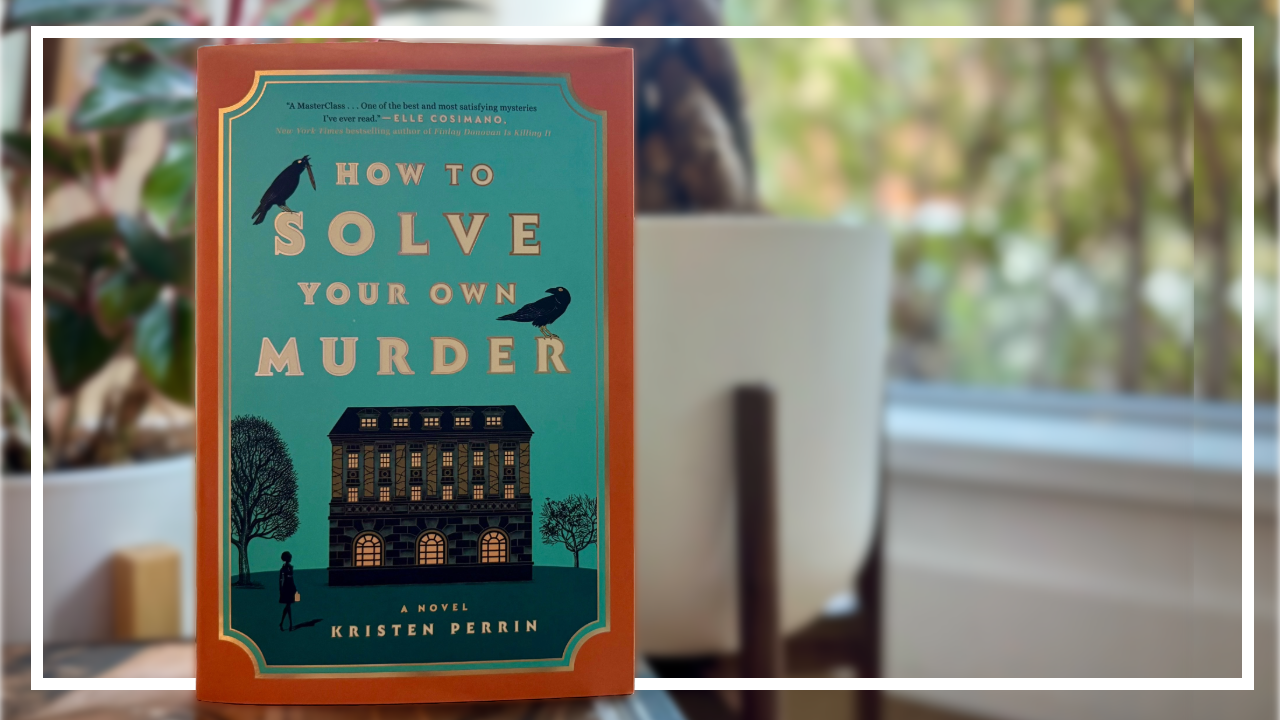As a mystery fan, I constantly find myself wishing for books with both a human element and a really tricky puzzle. Modern mysteries frequently seem to focus on one or the other. Cozies love human connection, but their puzzles are often predictable, especially reading at a meta-level. And modern stories that focus on the crime solving often lose on the emotional elements of discovery. (Does Google obviate conversation? I’m not sure it needs to…)
There are a few modern mysteries that hit the sweet spot, however. Frequently, as they’re written by fellow traditional mystery lovers, they involve a manor house in the English countryside, often inherited. There’s your typical cast of English country village stereotypes, each as comforting and familiar as the next. And because of all the history tied up in English country houses, there’s often a parallel-tracked cold case. (This also allows reinforcement of the human element, as the protagonist must learn what happened in years prior, often orally.) There’s often a closed circle of characters and the mystery’s solution is as psychological as it is physical or logical.
You’d think after one or two of these stories, I might get bored – but they’re my literary comfort food. On my shelf right now, I have The Framed Women of Ardemore House (the autism one), Grave Expectations (the funny paranormal one), The Three Dahlias (the one with a mystery convention), and a series of Christmas mysteries. So, of course, when I saw How to Solve Your Own Murder, with an inherited country house and a parallel historical mystery, I had to try it out.
Well-trodden mystery paths…
The “it” factor of How to Solve Your Own Murder is the victim’s belief in a prophecy about her death. Wealthy Aunt Frances, having heard a fortune-teller prophesy an untimely end, has spent her whole life trying to avoid and/or document the murderous deed. When she dies, she bequeaths her estate to whoever solves the murder, with full access to her life’s research.
So we have a murder mystery hunt with a manor house inheritance in the balance. It’s a tried-and-true formula, bringing to mind classics like The Westing Game alongside more modern mysteries like The Christmas Murder Game. Perhaps the truly unique factor here are the local research files Frances lets her contestants use, and the incentive she creates for the village to help them solve her murder. If neither of her putative legatees can solve the murder in a week AND before the police do, the entire estate gets sold to developers.
Still, the title sets up a hard bar to clear, especially given some of those prior comparators. In The Westing Game, for example, Sam Westing definitely sets up the puzzle and there’s no question of the solution. No judge is required, because there’s no uncertainty to be had. Sam Westing, too, know his contestants and had reasons to think they might be able to tackle a puzzle – unlike Aunt Frances, who basically just springs the requirement on her family as a surprise.
How to Solve Your Own Murder sets itself up for a bit of puzzle disappointment. While Perrin writes a perfectly serviceable puzzle, it’s hard not to feel a little let down when her legatees solve her murder, mostly using present-day info and a single diary. I won’t spoil the solution – but suffice it to say the files are less useful than one might want.
…in a person-first story
What about the community aspect of the story? In many ways, How to Solve Your Own Murder tries to have its cake and eat it too here. Our modern protagonist, Annie, is an outsider, so we get to watch her move into a small community and try to win the residents over. At the same time, she’s reading excerpts of Aunt Frances’s diary, getting the ultimate insider POV.
One traditional element that stuck out well was how the historical mystery forced Annie to take in more oral history and really learn about the principal characters. Watching Annie learn more about the villagers and their relationships with Frances was strangely comforting – because it required contextualizing the facts already filed away. Skipping the step of scandal discovery made the story more human, in a way similar to how Miss Marple’s educated guesses made it easier for her to focus on motives and character. (The time crunch factor probably supported this community element as well, as it forced villagers to cooperate more, and hide less.)
Another element I appreciated here was Perrin taking the time to really conclude the novel. The conclusion lasted multiple chapters, including both a solution and a character wrap-up. That wrap-up felt more satisfying because the process of investigation required opening so many tense threads. In that spirit of community and of new growth, it’s nice to see them all closed up before the final chapter. Unlike many modern mysteries, Annie’s felt like a complete story – and I’m not sure how much a new series entry would make sense today.
Reader’s notes and rating (⭐️⭐️⭐️✨)
This was a well-executed and solid traditional murder mystery. Reading it was like Chicken Soup for the Golden Age Mystery Lover’s soul. Not as new or innovative as some reviews seem to have mentioned – but a solid, serviceable mystery with an interesting historical twist. Three and a half stars.
Read this if…
- You love a manor house murder
- You appreciate the outsider’s perspective
- You enjoy stories where the past and the present connect
Skip this if…
- You want something that breaks the mold
- You’re looking for the trickiest puzzle to solve
How to Solve Your Own Murder was published on March 26, 2024.
*This will meet “a plot similar to another book” for my 52 Book Club challenge this year – it made me want to re-read The Westing Game, so we will see that coming down the pipe!
